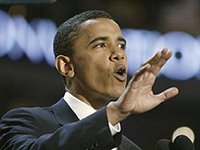Patience is a Virtue
 It has been a while since my last Nats-related post. Many blogs devoted to the team far surpass, in frequency, my own meager contributions. However, despite the winter lag, there has been promising news for the organization.
It has been a while since my last Nats-related post. Many blogs devoted to the team far surpass, in frequency, my own meager contributions. However, despite the winter lag, there has been promising news for the organization.First and foremost, the selection of Manny Acta as the new manager should bring exuberance and optimism to a young team who will most likely endure further growing pains as the new ownership builds. The club goes from having the oldest manager in baseball in Frank Robinson, 71 in 2006, to now having the youngest (Acta will be 38 at the start of Spring Training in 2007).
Many fans on message boards and blogs use the term “re-building” when describing the overall philosophy that the new owners have toward the club. As a financial disaster in Montreal, talent was often purged by then-GM Omar Minaya, now GM for the New York Mets. To keep the team financially afloat, MLB, who then owned and operated the fledgling club, saw to a penny-pinching tactics that often including the trading of talent. Much to the ulcer-inducing contemplation of Nats fans, players such as Grady Sizemore, Brandon Phillips and Jason Bay were once in the Expos farm system, amongst others.
As such, when the Montreal Expos became the Washington Nationals, the Nats inherited that depleted minor league system.
A strong minor league pool of talent helps the major league team in two primary ways: it provides the team extra leverage in a trade, and it keeps the team from the two words every GM and owner hate; free agency.
Even mediocre, aging players can earn millions of dollars when they become apart of the open market.
This presents clear problems to payroll. If a team spends free agency money on, say, three to five players, half of the team’s overall payroll could be allocated to those select players. It is by no means an optimal course of action in fiscal management. Take the Yankees, for example. Because of their league leading payroll, around $200 million, the Yankees were forced to pay a $26 million luxury tax (the Nats 2007 payroll has an on-going estimate of about $30-$40 million).
$26 million wasted. The Yankees weren’t even able to contend in the ALCS, let alone win a World Series, which is what Yankees owner George Steinbrenner has in mind when spending so much money. Was it worth it?
Now, the Yankees are an extreme example. However, they represent what can go wrong when teams buy players at free agency prices.
The term re-building implies a somewhat self-sustaining structure (one that includes a solid foundation) that needs a small number of additions to make it completely whole. The Nats foundation, their farm system, is one of the worst in baseball. They are not in a re-building process; they are in a building-up process. I bring up a subtle disagreement on lexicon, but a necessary one as they create two different scenarios. Without a solid foundation, your structure will never stand strong. That’s the first line in the textbook used in Architecture 101. The Nats need to first establish a foundation for the major league team.
So, the Nats have remained relatively quiet during the free agency period. This is sound wisdom on the part of the newly awarded ownership, under the day-to-day command of Stan Kasten, who went through a similar process with the Atlanta Braves
One of the biggest, and most surprising, moves over the winter came with the dealing of veteran 2B Jose Vidro, 32, to the Seattle Mariners for two promising players: Chris Snelling, 25, and Emiliano Fruto, 22. In addition, the Mariners (for reasons beyond me) agreed to pay $12 million of the $16 million existing on the aging Vidro’s contract.
It’s wonderful move. For the Nationals. Deal an aging, expensive player for two young, cheaper prospects. This is, in essence, the direction that the Nats will take the organization over the next few years. It’s a two handed challenge: on one hand you need to keep the team’s payroll under inflation-control as much as possible without sacrificing the team’s overall respectability in play, and on the other you need to bring in young talent, giving them an opportunity to prove their muster. The two do go hand in hand—but it requires patience and determination.
The Nats have that patience and determination. They know the financial system in which they operate, and will not allow it degenerate the long-term goals of building a winning ball club. Some fans have expressed concern at the Nationals for not staking a greater claim in the free agency market. I would be more concerned if the team started to do this. When the new ballpark opens in 2008, the Nats are projected to have one of the top five markets in all of baseball. However, just because you are a big market team doesn’t mean you have to spend (i.e. “waste”) money like a big market team. We don’t need a Yankees organization in the nation’s capital.






